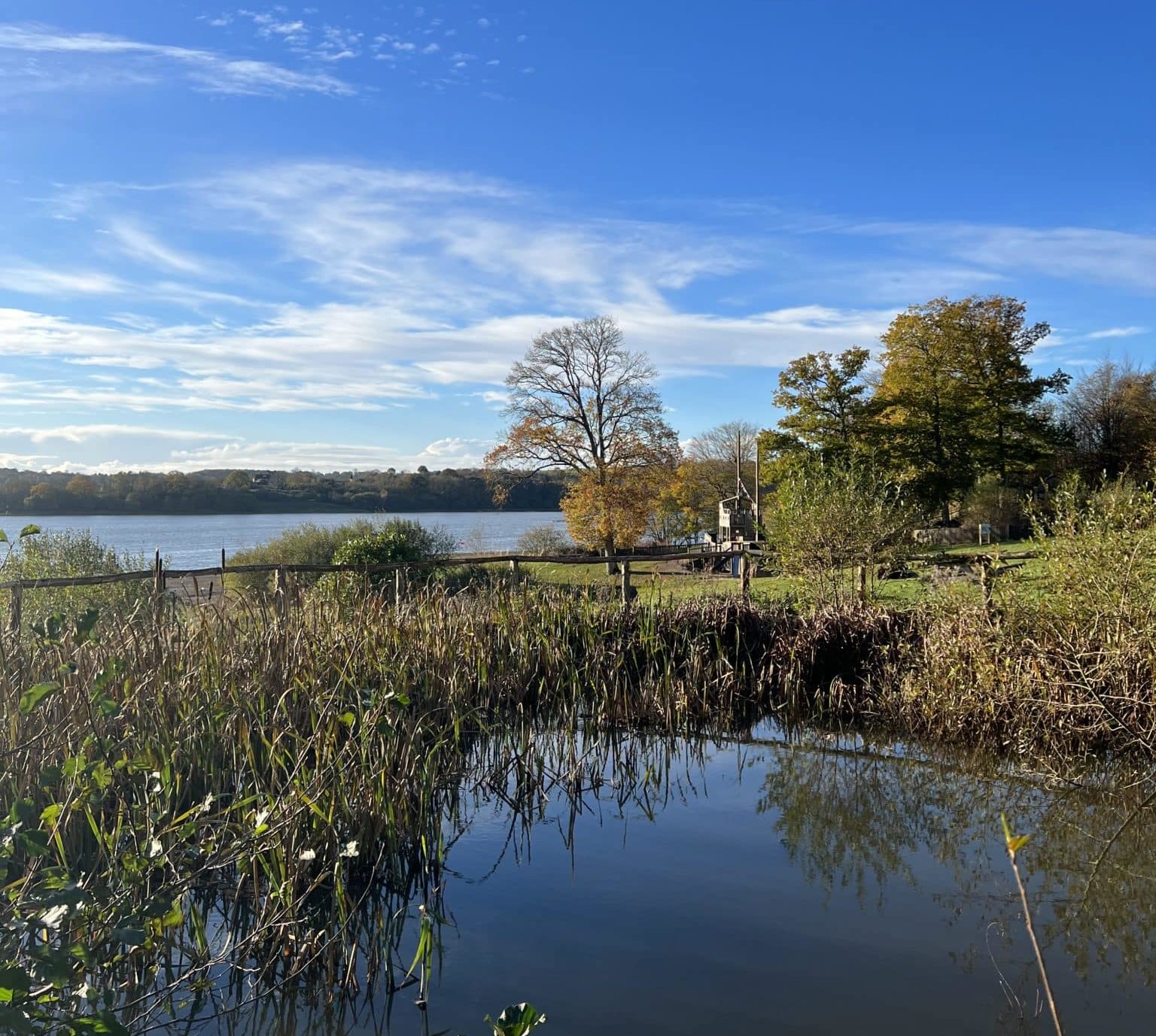Known as the ‘Garden of England’, woodlands in Kent are picturesque, peaceful, and rich in heritage. From forest trails to grounds that surround the country homes of the High Weald, the county is carpeted with flora and delightful habitats.
One popular destination is our very own reservoir here at Bewl Water. Straddling the boundary between Kent and East Sussex, our ancient woodlands are made up of 12.5 miles of forest paths and country lanes, perfect for a walk, run or bike ride allowing visitors to discover our treasured space that has been growing for centuries.
The Woodland Trust
To ensure we enhance the woodlands and secure their future, we work closely alongside The Woodland Trust – the largest woodland conservation charity in the United Kingdom.
The trust owns and cares for well over 1,250 sites covering almost 30,000 hectares (ha) across the UK. This includes more than 4,000ha of ancient semi-natural woodland – a type of forest that holds evidence of continuous wooded cover since 1600 AD.
Ancient semi-natural woods only cover 2.5% of UK grounds and includes the three woods that make up Bewl Water. Combewell, Pig and Frogwell are irreplaceable habitats and are therefore recognised as a natural asset, important for the rare and threatened species of wildlife that live here.
Protecting Bewl Water
Our work with The Woodland Trust aims to conserve these habitats whilst connecting them with our visitors and is based on improving biodiversity whilst protecting our wildflowers and elaborate natural ecosystems.
Currently, the Bewl Water rangers are working in conjunction with the trust following a management plan that runs up until 2027. The plan is available to download online by visiting WoodlandTrust.Org.UK, and highlights can be broken down into long and short-term objectives.
Long-term
Our grounds are distinctly characterised by ancient woodlands which have been previously managed by coppicing however various constraints now make this impractical to carry on. Therefore, a degree of diversity in structure and tree species will be maintained by a policy of minimum intervention which allows the processes of natural succession to take place.
By avoiding silvicultural operations such as coppicing or thinning, species such as oak will be able to develop veteran characteristics in the long term. The dieback and death of the chestnut coppice will also create some structural diversity by creating small-scale gaps that will regenerate with species such as birch, willow, alder, and sycamore.
 Short-term
Short-term
Protecting and caring for our grounds goes far beyond improving biodiversity and whilst this is of paramount importance to secure Bewl Water’s future, improving safety and overall conditions for our visitors is also an important aspect of both our short and long-term objectives.
For the next five years and thereafter, highlights include focusing on connecting people with nature. Efforts will provide a network of safe paths, rides and access points adding to the interest of the reservoir circular walk whilst maintaining signs, entrances, benches, and paths will add a welcoming aspect to the woods.
What you can expect to see when visiting the Bewl Water Woods
For centuries our native woodland has been in decline, but with dedicated efforts and our combined partnership with The Woodland Trust, the state of our forest has been improving as we restore and preserve what remains of our ancient woodlands.
Our conservation efforts at Bewl Water are ongoing to keep our trees and flowers flourishing, and when you visit, whether you do so for a winter walk or a summer picnic, you can spot lots of native species.
Trees at Bewl Water include oak, hornbeam, sweet chestnut, alder, and hazel and wildflowers include bluebells, wood anemone, yellow archangel, yellow pimpernel, wood speedwell, hairy woodrush, and foxglove!
On your next visit, be sure to catch one of our rangers for more information regarding the ancient woodlands – our experts are always on hand and love answering your questions.




 Short-term
Short-term